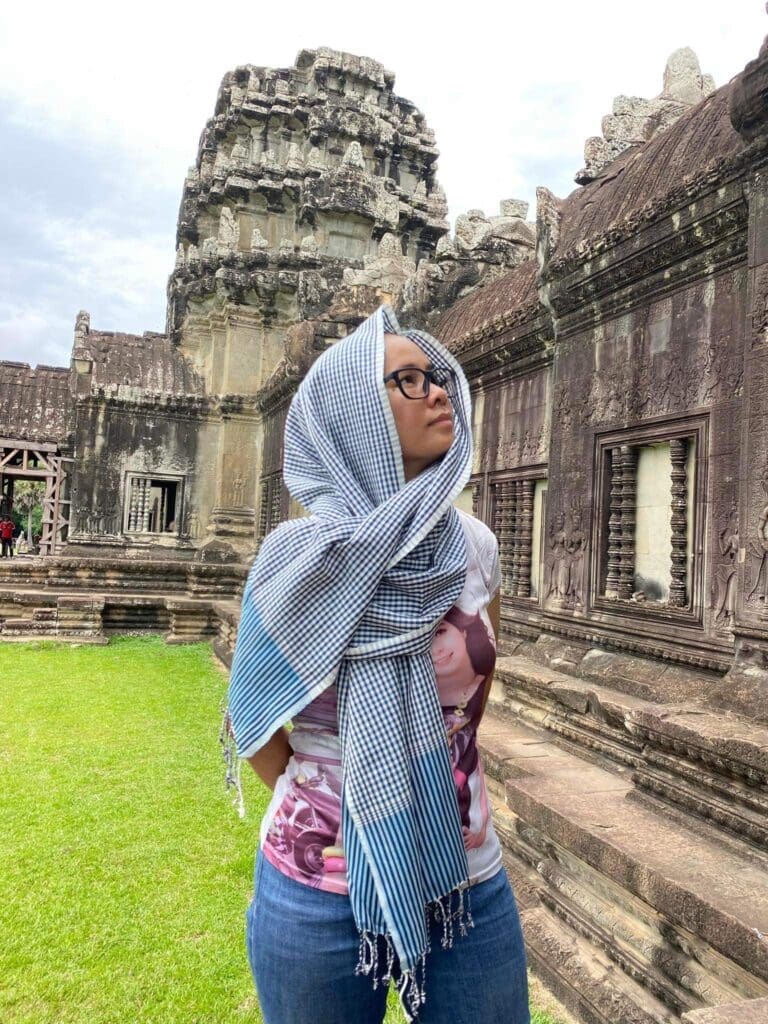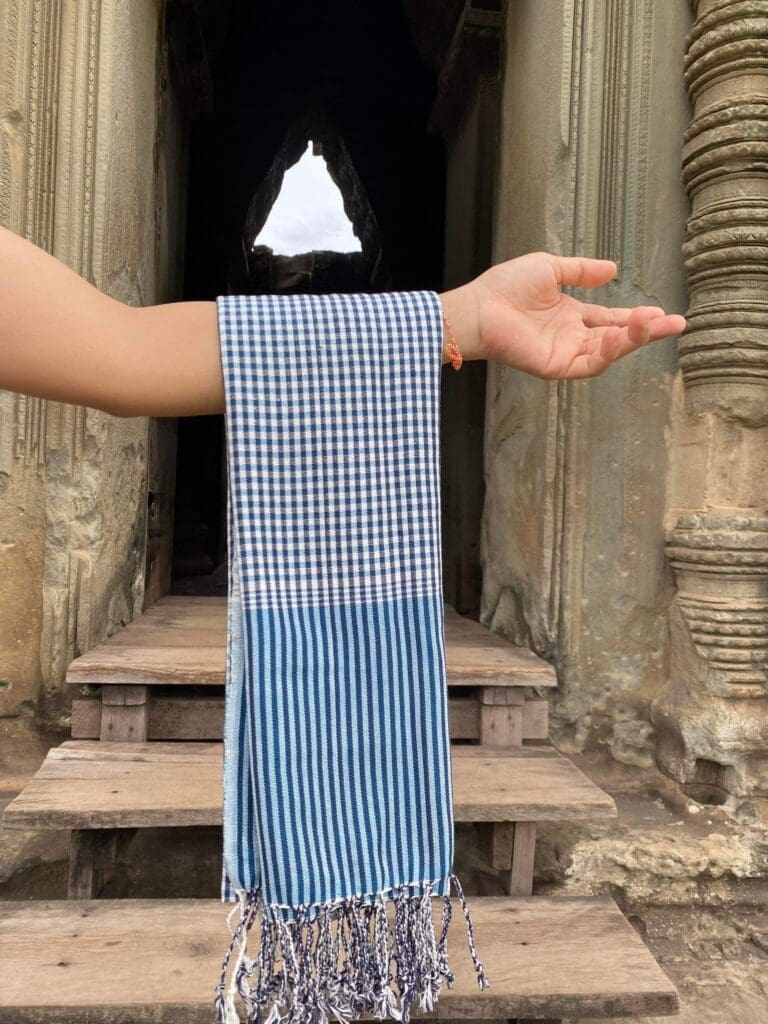
Angkor Wat is one of the world's most emblematic religious monuments and an architectural treasure trove of Cambodian history. Originally dedicated to the Hindu god Vishnu, Angkor Wat illustrates the greatness and ingenuity of Khmer art, architecture and engineering.
Origin and construction
Angkor Wat, which literally means ‘Temple of the City’, was designed as a funerary temple to honour Suryavarman II after his death. It is located near Siem Reap, in an area that served as the political and religious capital of the Khmer Empire. The entire complex, covering around 162 hectares, is surrounded by a vast moat, symbolising the mythological ocean.
The temple reflects a perfect combination of religious symbolism and utilitarian architecture. It is built in the classical Angkorian architectural style and represents Mount Meru, a sacred mountain in Hindu cosmology. The five central towers symbolise the peaks of Mount Meru, and the moats represent the seas surrounding this mythical mountain.

Religious symbolism
Although conceived as a Hindu temple, Angkor Wat is also a universal symbol of the connection between the divine and the human. The galleries, decorated with bas-reliefs, depict epic scenes from Hindu texts such as the Ramayana and the Mahabharata, as well as the exploits of the Khmer kings. The most famous bas-relief is that of the Churning of the Ocean of Milk, a mythological scene depicting the quest for immortality.
Conversion to Buddhism
In the 16th century, when Hinduism declined in the region, Angkor Wat became a Buddhist temple. Buddha statues were added, and today it remains a sacred site of Theravāda Buddhism. This transition reflects Cambodia's cultural and religious evolution over the centuries.


Decline and rediscovery
After the fall of the Khmer Empire in the 15th century, Angkor Wat was largely abandoned, although it was always used as a place of worship. The surrounding jungles invaded the site, adding to its mystery. In the 19th century, Western explorers, notably the Frenchman Henri Mouhot, rediscovered the complex, bringing Angkor Wat to international attention.

Preservation and world heritage
Since its inscription on the UNESCO World Heritage List in 1992, Angkor Wat has been the focus of intensive preservation efforts. Challenges include restoring structures, managing tourist crowds and protecting against the effects of the climate
Today, Angkor Wat remains a national symbol of Cambodia, featured on its flag, and a must-see site for visitors from around the world.

Our collaboration with our Cambodia Weavers is rooted in a shared commitment to preserving traditional craftsmanship and supporting local artisans. Together, we focus on creating handmade kramas – the iconic Cambodian scarves – through sustainable and ethical practices. Each krama is carefully woven by skilled artisans using time-honored techniques passed down through generations, with meticulous attention to detail in every thread and pattern.



This partnership goes beyond crafting high-quality scarves; it empowers Cambodian weavers by providing fair wages and fostering economic stability within their communities. Through this collaboration, we celebrate and help sustain Cambodia’s cultural heritage while offering customers authentic, handcrafted kramas that represent the spirit and resilience of the Khmer people.

Our new traditional Cambodian krama scarf KHEEW 55x180 cm, folded neatly in soft blue hues, made from lightweight cotton with a subtle checkered pattern.



The krama, symbolic of Khmer culture, shows intricate weaving with delicate, tightly-woven threads that create a durable yet comfortable texture. This blue scarf exudes a sense of cultural pride and versatility, as kramas are worn in various styles – wrapped around the neck, head, or used as a utility cloth.
Krama-Khmer : weaving emotions together.
